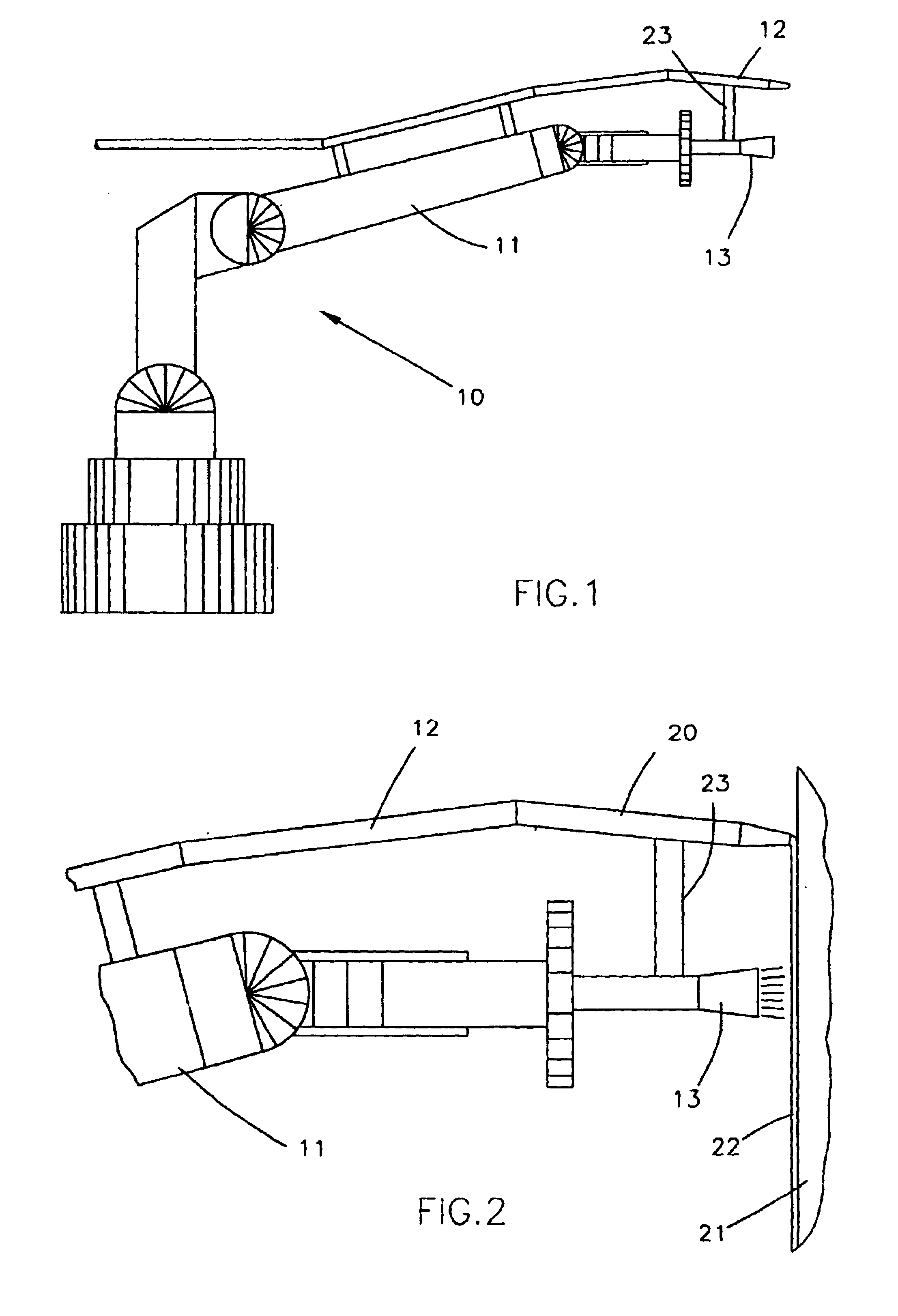Curable sealant composition
a technology of composition and sealant, applied in the direction of vehicle sealing arrangement, printing, disinfection, etc., can solve the problems of reducing the effectiveness of the strip, reducing the effect of the strip, and affecting the sealing effect, etc., and achieve the effect of convenient manipulation
- Summary
- Abstract
- Description
- Claims
- Application Information
AI Technical Summary
Benefits of technology
Problems solved by technology
Method used
Image
Examples
example 1
Blending began by pumping into the mixing vessel polyester polyol (Dynacoll 7110) at 250 F. One-hundred fifty-four pounds of a second polyester polyol (Tone 0301) was added to the mixing vessel. The polyols were blended until both polyol constituents are fully dissolved in each other. The polyol mixture is substantially transparent. The temperature within the mixing vessel was maintained at 180 F.
One-hundred thirty-five pounds of cyclaliphatic epoxy (Uvacure 1500) was then added to the mixing vessel. When all of the epoxy was uniformly mixed, 3.3 pounds of sulfonium salt (UVI-6974) were added to the vessel. Mixing was continued at a temperature of 180 F for 10 min.
Eleven pounds of silica (Cab-O-Sil) was then added to the mixing vessel. The silica was stirred into the mixture until wetted. Then another 11 pounds of silica (Cab-O-Sil) is added. Mixing was continued to fully dispersed the constituents of the vessel. Mixing was then performed at high shear rate under vacuum until substa...
example 2
One inventive composition was produced in accordance with the following method. A two (2) gallon Ross Model PD2 planetary dispersion mixer was obtained and in connected to a Chromolox heater. The dispersion mixer was operated at a temperature of 190 F.
2824 grams of liquid polyol (Tone 0301) and 888 grams of the solid polyol (7110) were introduced into the mixer and mixed for 10 minutes. Sixty (60) percent (240 grams) of the silica thickener (Cabosil supplied by Cabot Corporation) was introduced into the mixer and the combination was mixed for another 10 minutes.
500 grams of epoxy (Uvacure 1500) and the remaining 40% (160 grams) of the silica were then added and mixed for 10 min. This was followed by adding 60 grams of the photoiniatitor (Cyracure 6974) and 2172 grams of epoxy (UVACure 1500) to the mixer and mixed for 5 minutes. The contents of the mixer were then mixed under vacuum for 10 minutes thereby producing 1.3 gallons of the inventive composition.
example 3
222 g of polyester polyol (Dynacoll 7110) at a temperature of 250 F were poured into the a gallon can. About 706 g of a second polyester polyol (Tone 0301) were added to the first polyol. The polyols were blended in a Rotor-Stator Mixer. This until both constituents are fully dissolved in each other. The mixture was transparent at this point. The temperature of this mixture was maintained at 180 F.
Approximately 618 g epoxy (Uvacure 1500) were admixed with the heated mixture. When all epoxy was uniformly mixed, 15 g of photoiniator (UVI-6974) were added. Mixing continued at a temperature of 180 F for 10 min.
To the mixture, about 50 g of silica (Cab-O-Sil) were added. The mixture was stirred until the silica was wetted into the mix. An addition 50 g of silica (Cab-O-Sil) was combined with the mixture while continuing mixing until the silica was fully dispersed.
The mixture was transferred to a vacuum chamber and maintained under vacuum until all bubbling ceased in the mixture. About ½ ...
PUM
| Property | Measurement | Unit |
|---|---|---|
| wavelength | aaaaa | aaaaa |
| thickness | aaaaa | aaaaa |
| wt. % | aaaaa | aaaaa |
Abstract
Description
Claims
Application Information
 Login to View More
Login to View More - R&D
- Intellectual Property
- Life Sciences
- Materials
- Tech Scout
- Unparalleled Data Quality
- Higher Quality Content
- 60% Fewer Hallucinations
Browse by: Latest US Patents, China's latest patents, Technical Efficacy Thesaurus, Application Domain, Technology Topic, Popular Technical Reports.
© 2025 PatSnap. All rights reserved.Legal|Privacy policy|Modern Slavery Act Transparency Statement|Sitemap|About US| Contact US: help@patsnap.com

